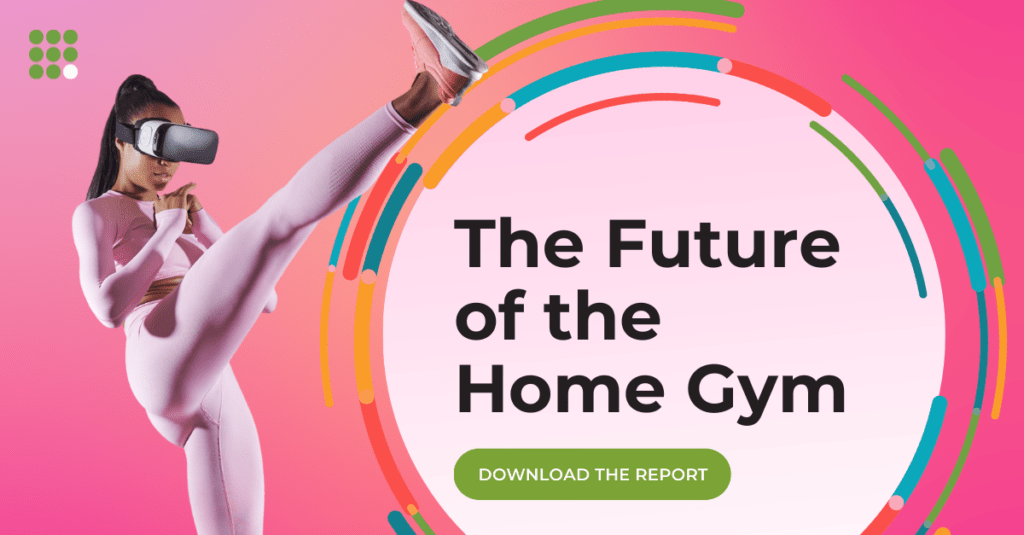Gender equality has been a hotly debated issue for years, and brands have been front and center in helping drive meaningful change. And although there has been much progress in dismantling gender stereotypes in advertisements and media, especially with ads that break gender stereotypes gaining attention, much work still remains to be done.
Notable examples of progressive campaigns include Heineken’s commercial promoting gender inclusivity, Mohey’s wedding campaign—one of several standout ads that challenge gender norms in India—and Korean beauty brand SK-II’s “Change Destiny” campaign, which contests conventional beauty standards.
These ads that break stereotypes not only resonate with modern audiences but also demonstrate how brands can lead societal change. When advertisers confront gender norms directly, they gain both cultural relevance and commercial advantage. Gender stereotypes in advertising—when left unchallenged—can alienate audiences, but progressive messaging often sparks stronger brand affinity.
Advertising can be used to promote gender equality and challenge gender stereotypes. Studies have shown that media images are more impactful than books on gender equality. Advertisers can showcase their customers’ diversity in their communications and ultimately help create an environment where all genders are respected, accepted, and valued.
Breaking gender stereotypes in advertising doesn’t mean abandoning brand identity—it means evolving with the audience. Consumers today expect brands to mirror modern values. Inclusive advertising that acknowledges gender diversity not only earns goodwill but also strengthens a brand’s strategic positioning in competitive markets.
Today’s consumer increasingly expects to see the reality of their lives and gender equality from the brands they engage with. It is, therefore, a win-win situation for brands showcasing gender equality.
Gender equality in advertising is more than a visual checkbox. It’s about reshaping brand storytelling to eliminate outdated roles and stereotypes. Successful campaigns now lead with intention, ensuring their creative reflects the diversity of real-life identities, families, and experiences. As gender roles evolve in society, advertising must evolve in parallel—or risk cultural irrelevance.
The role of social media in challenging gender stereotyping
Social media has transformed how brands are held accountable for gender stereotyping in advertising. Where once consumers had limited power to respond to outdated portrayals, they now have a platform to call out brands in real time. Public critique has shifted the power dynamic—brands can no longer afford to rely on traditional gender roles without risking backlash.
This visibility has raised the standard for inclusive advertising. Consumers increasingly expect campaigns that reflect authentic stories, diverse identities, and a departure from reductive gender norms. Brands that meet this expectation are rewarded with engagement and loyalty. Those that don’t risk irrelevance.
Social media’s algorithmic reach has also accelerated this shift. A single tone-deaf ad can trigger backlash that spreads across platforms in hours. Brands like Dolce & Gabbana, for example, faced global criticism when their ad was perceived as racially and culturally insensitive. On the flip side, viral praise for ads that break gender stereotypes—such as Pantene’s “Labels Against Women”—demonstrates how inclusive advertising can win both headlines and hearts.
A legal shift: UK bans gender stereotypes in advertising
In 2019, a significant development took place in the United Kingdom when the Advertising Standards Authority (ASA) banned harmful gender stereotypes in British ads. The new rules required advertisers to eliminate depictions that reinforce traditional gender roles, such as portraying women solely as caregivers or men as inept in domestic roles. The goal: promote a more inclusive and realistic portrayal of gender.
The ASA’s move recognized advertising’s powerful role in shaping cultural norms. By tackling gender bias at a structural level, the UK encouraged other nations to assess their own practices and reinforced that inclusive advertising is not just ethical—it’s necessary. a significant step towards fostering more inclusive and equitable advertising practices. It signaled the recognition of the influential role of advertising in shaping societal perceptions and aimed to create a more diverse and empowering representation of gender in the media.
This regulatory shift reflects a broader movement calling for brands to rethink how gender stereotypes in advertising influence public perception. When ads reinforce gender norms—whether intentionally or not—they shape attitudes that persist beyond the screen. Eliminating harmful tropes isn’t just about compliance; it’s about aligning brand values with a changing cultural landscape.
Why inclusive advertising delivers ROI
Studies show progressive advertising improves brand performance. Inclusive campaigns:
Drive advocacy: Representation fosters pride, prompting customers to share and recommend the brand.
Target a wider audience: Brands connect with a broader, more diverse consumer base.
Build loyalty: Consumers identify with brands that share their values, driving repeat purchase.
Enhance reputation: Inclusive messaging positions brands as forward-thinking and socially responsible.
Improve brand recall: Ads that break stereotypes are more likely to be remembered, talked about, and shared—amplifying their impact far beyond initial exposure.
Brands that invest in gender-equal advertising also benefit from increased relevance across generations. Gen Z and millennials, in particular, are more likely to reward companies whose marketing reflects inclusive values. Inclusive advertising campaigns that reflect a wide spectrum of gender identities are more likely to be shared, remembered, and acted upon.
Gen X consumers—often overlooked—also respond positively to inclusive messaging, especially when it reflects the shifting gender dynamics in workplaces and households. While younger cohorts may drive the conversation, Gen X holds significant purchasing power and expects advertising to acknowledge their evolving roles as caregivers, professionals, and decision-makers. Recognizing this group helps brands widen their impact and stay relevant across life stages.
9 Ways advertisers can promote gender equality.
1. Challenge gender stereotypes
Avoid defaulting to outdated tropes. Use research and insights to rethink how gender is portrayed. The Always “Like a Girl” campaign succeeded by transforming a dismissive phrase into a powerful message about confidence and capability. Brands that challenge the status quo often spark conversation—and redefine expectations.

2. Feature diverse body types
Consumers expect to see themselves reflected in advertising. Dove’s long-standing Real Beauty campaign challenged the narrow standards of beauty by showcasing real women of all sizes, ages, and skin tones. This kind of visibility builds trust and shows that the brand values authenticity over perfection.
3. Use inclusive language
Gender-neutral terms such as “they” help avoid assumptions and make space for non-binary and gender-diverse individuals. But language must be consistent across the brand experience. That means auditing product descriptions, surveys, chatbot scripts, and customer service replies. Every interaction is an opportunity to reinforce inclusion.
4. Promote equal opportunities
Representation goes beyond visuals. Advertisers should highlight leadership, talent, and potential across all genders, showing individuals in roles of authority, innovation, and expertise. Breaking stereotypes means showing women in tech, men as caregivers, and non-binary people leading teams or solving problems.
5. Address women’s issues
Ads that tackle gender inequities—like pay gaps, workplace discrimination, or underrepresentation—can be powerful. But the approach must be intentional. Token gestures often draw criticism. The strongest campaigns pair messaging with action: internal diversity policies, partnerships with advocacy groups, or support for systemic change.
6. Celebrate women’s achievements
Spotlighting accomplishment is more effective than making appeals to empowerment alone. Nike’s “Dream Crazier” campaign honored athletes who defied expectations—turning criticism into fuel. Celebrating resilience and success in real-world contexts adds both emotional depth and commercial impact.

7. Partner with women creators
Authenticity matters. Involving women directors, photographers, writers, and strategists helps ensure campaigns reflect real perspectives—not assumptions. This also contributes to gender equity in the creative industries and brings richer, more relevant storytelling into the brand voice.
8. Advocate for empowerment
Empowerment should be more than a tagline. It’s about portraying confidence, strength, ambition, and joy across all identities. Campaigns that show people owning their decisions, asserting themselves, or redefining norms create stronger emotional resonance—and cultural relevance.
9. Promote self-care and well-being
Mental health and emotional resilience are universal. Brands that offer self-care narratives without relying on gender clichés stand out. The goal isn’t to paint over problems with pastel—it’s to create space for honesty, growth, and support across the spectrum of identity and experience.
Effective ads that break stereotypes don’t just focus on visuals—they’re built on authentic messaging and insight. Brands must challenge gender roles not only by showing diverse faces, but by telling different stories. The most compelling campaigns highlight real struggles, joy, leadership, and complexity across all gender identities.
The most successful gender-equal advertising campaigns focus on lived experiences. They avoid caricatures and instead show everyday people navigating real choices, emotions, and achievements. These narratives build emotional credibility—and emotional connection drives conversion.
The Role of Market research in inclusive strategy.
Inclusive advertising starts with inclusive insight. Brands that truly understand the lived experiences of different genders are better equipped to dismantle outdated roles in their creative campaigns. Market research plays a foundational role in identifying the unconscious biases that still linger in messaging and concept development.
Brands that want to break gender stereotypes need more than intent—they need insight. Market research helps uncover cultural beliefs and consumer values that shape how gender is perceived.
Always used consumer research to create its powerful “Like a Girl” campaign, shifting a phrase once seen as an insult into a symbol of strength. H&M learned male shoppers felt limited by traditional masculinity, prompting a gender-neutral fashion campaign fronted by David Beckham.
These examples show how ads that break stereotypes often begin with research that challenges outdated assumptions. Without deep consumer understanding, even well-intentioned campaigns can fall into the trap of tokenism. Market research uncovers the nuances in how gender roles are viewed across different cultures, regions, and demographics. It provides the clarity brands need to avoid surface-level diversity and instead produce inclusive advertising that genuinely connects.
Inclusive advertising, around the world
Apple’s “Behind the Mac”: Real stories of women using tech to pursue creative goals.
Nike’s “Dream Crazier”: Celebrates female athletes and defies limits imposed by outdated norms.
John Lewis’ “Man on the Moon”: Focused on empathy, loneliness, and emotional connection, not gender.

Tanishq’s “Ekatvam”: Bridged interfaith divides in India, sparking inclusion conversations.
DBS Bank’s “SPARKS”: Tells stories of achievement and diversity from across Asia.
IKEA: Consults experts to ensure its household ads break down gender roles in parenting.
Levi Strauss: Promotes equity in the workplace and features all genders in leadership.
L’Oréal’s #WomenNotObjects: Moves away from objectification to empowerment.
Ads that challenge gender stereotypes don’t follow a template—but they do share common traits: cultural awareness, audience insight, and bold creative execution. From Asia to Europe to the US, the most successful campaigns focus on inclusion not as a marketing hook, but as a core brand value. This global movement toward more inclusive advertising is reshaping how brands communicate—and how they’re remembered.
Industries making strides—and those lagging behind
Retailers like Target, Amazon, and Disney have embraced gender neutrality in signage and product categories. The beverage industry, by contrast, still clings to outdated ideas of masculinity to sell products like energy drinks.
How Gender Stereotypes Shape Global Brand Perception
Gender stereotypes in advertising don’t just affect individual campaigns—they shape how entire industries and brands are perceived across markets. In some countries, portrayals of traditional masculinity still dominate automotive, sports, and alcohol ads, perpetuating narrow ideals of success and identity. In contrast, markets like Sweden, Canada, and South Korea have seen a rise in gender-equal advertising regulations and consumer demand for inclusive messaging. Brands operating globally must navigate these nuances carefully to avoid alienating audiences or violating local norms.
Why Gender Equality in Advertising Still Matters
Despite the progress made, gender equality in advertising remains an ongoing challenge. Many ads continue to reinforce outdated norms or miss the opportunity to represent real diversity. Addressing this imbalance through gender-equal advertising strategies is more than an ethical imperative—it’s a strategic one.
Advertising can shape social expectations. When brands reject gender stereotypes and champion diverse roles, they not only win consumer trust but also build a more inclusive world. And consumers are noticing.
If your brand is ready to break free from outdated gender norms and make inclusivity more than just a message, we can help. Request a proposal to learn how Kadence uncovers the insights needed to build more representative campaigns and drive lasting cultural relevance.
Get regular insights
Keep up to date with the latest insights from our research as well as all our company news in our free monthly newsletter.





 Senior Marketing Executive
Senior Marketing Executive Sales & Marketing
Sales & Marketing General Manager PR -Internal Communications & Government Affairs
General Manager PR -Internal Communications & Government Affairs Vital Strategies
Vital Strategies
 Customer Intelligence Director
Customer Intelligence Director